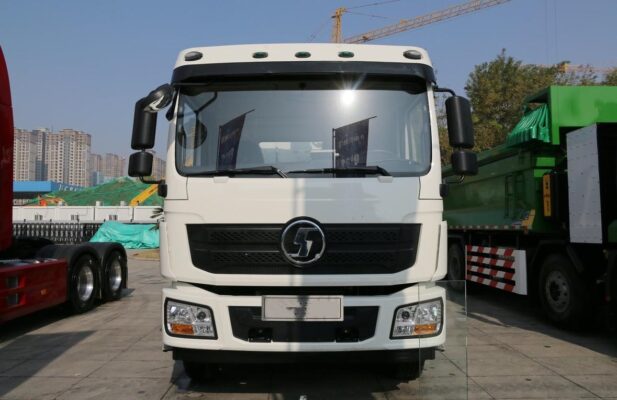Elektrikli Kamyon Haberleri
Understanding the Voltage of Pure Electric Vehicles
The voltage of pure electric vehicles (EV'ler) is a fundamental aspect of their design and operation, playing a critical role in performance, yeterlik, and charging. Typically, pure electric vehicles utilize high voltage direct current (HVDC) systems, with voltage levels generally ranging from 300 volts (V) to 1000 volts (V). Most manufacturers design their electric vehicles to operate at voltages exceeding 400 volts, reflecting the industry’s shift toward more efficient and powerful electric drivetrains.

1. The Importance of High Voltage DC in Electric Vehicles
High Voltage Efficiency
The primary reason pure electric vehicles use high voltage DC is to enhance transmission efficiency. Higher voltage levels significantly reduce energy losses that can occur during the transmission of electricity. When power is transmitted over long distances, as is the case in EV systems from the battery to the motor, higher voltages minimize resistive losses, allowing more of the generated energy to reach the wheels. This efficiency is particularly vital for electric vehicles, where range is a key concern for users.
Better Battery Management
High voltage DC is also more compatible with the charging and discharging processes of batteries. Electric vehicle batteries typically operate using direct current, making it essential for the power supplied to match the battery’s requirements. High voltage systems facilitate effective energy transfer, allowing for faster charging and improved overall performance. Ek olarak, they contribute to the vehicle’s ability to handle higher power demands without overheating, which is crucial for sustained acceleration and driving performance.

2. Voltage and Vehicle Performance
Impact on Power and Acceleration
The voltage of pure electric vehicles significantly affects their performance characteristics. Higher voltage levels enable the transmission of greater current, resulting in increased power output and improved acceleration. Örneğin, when the voltage is elevated, the electric motor can draw more current without exceeding its design limits, leading to stronger torque and faster acceleration.
Efficiency Improvements
In addition to enhancing power delivery, higher voltage reduces current losses throughout the vehicle’s electrical systems. Lower current flow means reduced heating in the conductors and other components, which can improve the overall efficiency of the vehicle. This efficiency translates to longer driving ranges, as less energy is wasted in the form of heat.

3. The Relationship Between Voltage and Charging
Charging Compatibility
The voltage of electric vehicles is intricately linked to the charging process. During charging, external power sources typically provide alternating current (AC), which must be converted to direct current (DC) to charge the vehicle’s battery. The charging equipment must output the appropriate voltage and current to match the specifications of the electric vehicle’s battery management system.
To ensure safe and effective charging, the voltage of the electric vehicle must align with that of the charging station or device. Mismatches can lead to inefficient charging, potential damage to the vehicle’s battery, or safety hazards. Therefore, electric vehicle manufacturers design their vehicles with specific voltage requirements to work seamlessly with standardized charging infrastructure.
Charging Infrastructure Standards
Most charging stations are designed to accommodate various voltage levels to support different electric vehicle models. Örneğin, Level 2 charging stations commonly operate at 240 volts, while DC fast chargers can deliver higher voltages, often exceeding 400 volts. Understanding the voltage requirements of a pure electric vehicle is crucial for users to select the right charging equipment and infrastructure, ensuring compatibility and efficiency.

4. Voltage and Charging Time
Influence on Charging Speed
The voltage of a pure electric vehicle can significantly impact charging time. Higher voltages allow for increased current flow, which can lead to faster charging rates. This is particularly evident in DC fast charging scenarios, where high voltage systems are designed to quickly replenish the vehicle’s battery.
Örneğin, a DC fast charger that operates at 800 volts can deliver power more rapidly than a charger at 400 volts, substantially reducing the time it takes to charge the vehicle. As the automotive industry advances toward more powerful charging solutions, the ability to charge quickly becomes a key selling point for manufacturers, as it enhances the overall user experience.
Optimal Charging Strategies
To maximize charging efficiency, electric vehicles often employ sophisticated battery management systems that can adjust the charging current and voltage based on the state of charge and temperature of the battery. This dynamic approach allows for safe, efficient charging while also prolonging the life of the battery.

5. Future Trends in Electric Vehicle Voltage
As technology continues to evolve, the voltage systems used in pure electric vehicles may undergo significant changes. Manufacturers are exploring higher voltage platforms that can support even greater power outputs, enabling more robust performance and faster charging capabilities. Research into solid-state batteries and other advanced technologies may also lead to innovations that further optimize voltage use in electric vehicles.
Moreover, as the infrastructure for electric vehicles expands and matures, the development of standardized high voltage charging stations will become increasingly critical. This will facilitate faster and more convenient charging options for consumers, enhancing the overall appeal of electric vehicles.

Conclusion
In summary, pure electric vehicles typically operate on high voltage direct current systems, usually above 400 volts. The choice of voltage is crucial, impacting transmission efficiency, performance, charging processes, and charging time. Understanding the voltage of electric vehicles is essential for selecting appropriate charging equipment and gaining insights into how these vehicles operate. As the industry progresses, advancements in voltage technology will continue to shape the future of electric mobility, making it an exciting field to watch.
